Joint Feeder Routing and Conductor Sizing in Rural Unbalanced Three-Phase Distribution Networks: An Exact Optimization Approach
Abstract
1. Introduction
1.1. General Context
1.2. Motivation
1.3. Literature Review
1.4. Contribution, Scope, and Limitations
1.5. Document Structure
2. Problem Formulation and Modeling
2.1. Objective Function
2.2. Set of Constraints
2.2.1. Physics of Unbalanced Three-Phase Networks
2.2.2. Operational Limits
2.2.3. Radial Topology and Design Consistency
2.2.4. Reference Conditions
2.3. Computational Complexity Analysis
- Binary variables: The model includes m variables that determine branch construction and variables that enforce exclusive conductor selection. Hence, the discrete component of the problem grows on the order of .
- Continuous variables: As shown in the Table 2, most of the equations are complex and contribute approximately variables. Therefore, the continuous space is of order .
- Constraints: The formulation includes: (i) Kirchhoff’s current laws at every node, (ii) Ohm’s law for each branch, (iii) voltage magnitude limits, (iv) ampacity constraints, and (v) radiality and selection constraints. Therefore, the number of constraints grows linearly with the number of nodes, candidate lines, and available conductor sizes, i.e., .
- Power flow equations: These introduce nonlinear and nonconvex couplings between voltages, currents, and impedance matrices. Bilinear terms and absolute values constraints make the continuous relaxation nonconvex, thereby eliminating polynomial-time solution guarantees [39].
3. Methodological Framework
3.1. Interior-Point Method
3.2. Interaction of Branch & Bound and Interior-Point Method in MINLP
3.3. Inputs and Data Preparation
3.4. Model Assembly in Julia/JuMP
3.5. Solution Procedure (B&B + Interior-Point)
- Initialization. Set variable domains (binary routing/conductor choices; complex ), default bounds, and solver tolerances (optimality gap, feasibility). If an incumbent is available, initialize it.
- Master loop (B&B). Iteratively branch on binary decisions (build/not build a route; select conductor type) to generate a search tree. At each node, form an NLP relaxation by fixing/relaxing the relevant binaries.
- NLP relaxation (Interior-Point). Solve the continuous subproblem with interior-point: compute a primal solution and a valid lower bound (from the relaxation). Enforce numerical safeguards (scaling, barrier updates).
- Feasibility and technical checks. Verify that the primal solution satisfies per-phase voltage limits, ampacity constraints, and radiality/connectivity. If feasible and better than the incumbent, update the incumbent.
- Bounding and pruning. Compare node lower bounds with the incumbent objective. Fathom nodes that cannot improve the incumbent. Continue branching on promising nodes according to the node-selection policy.
- Termination. Stop when the optimality gap meets the tolerance or when the node list is exhausted. Return the best feasible solution (topology and conductor assignments) with the associated objective value.
3.6. Stopping Criteria, Outputs, and Post-Processing
4. Case Study Systems
4.1. 10-Node Distribution System
4.2. 30-Node Distribution System
4.3. Available Conductors for Selection
5. Simulation Results and Analysis
5.1. Results in the 10-Node Distribution System
5.2. Results in the 30-Node Distribution System
6. Conclusions and Future Works
Author Contributions
Funding
Data Availability Statement
Acknowledgments
Conflicts of Interest
References
- Villarreal, M.I.Z.; Téllez, A.A.; Krishnan, N.; García, M. Expansion Planning of Electrical Distribution Systems Considering Voltage Quality and Reliability Criteria. Energies 2025, 18, 2822. [Google Scholar] [CrossRef]
- Firoozi, A.A.; Firoozi, A.A.; Oyejobi, D.; Avudaiappan, S.; Flores, E.S. Emerging trends in sustainable building materials: Technological innovations, enhanced performance, and future directions. Results Eng. 2024, 24, 103521. [Google Scholar] [CrossRef]
- Firoozi, A.A.; Firoozi, A.A.; Maghami, M.R. Harnessing photovoltaic innovation: Advancements, challenges, and strategic pathways for sustainable global development. Energy Convers. Manag. X 2025, 27, 101058. [Google Scholar] [CrossRef]
- Montoya, O.D.; Cortés-Caicedo, B.; Florez-Cediel, O.D. On the Exact Formulation of the Optimal Phase-Balancing Problem in Three-Phase Unbalanced Networks: Two Alternative Mixed-Integer Nonlinear Programming Models. Electricity 2025, 6, 9. [Google Scholar] [CrossRef]
- Dong, Y.; Wang, X. Comprehensive analysis on three-phase imbalance management technology of low-voltage distribution network. Appl. Comput. Eng. 2024, 62, 309–314. [Google Scholar] [CrossRef]
- Dobrzynski, K.; Czapp, S. Voltage and Current Unbalance Reduction in Power Networks with Distributed Generation and Electric Vehicles. Energies 2024, 17, 2780. [Google Scholar] [CrossRef]
- Fose, N.; Singh, A.R.; Krishnamurthy, S.; Ratshitanga, M.; Moodley, P. Empowering distribution system operators: A review of distributed energy resource forecasting techniques. Heliyon 2024, 10, e34800. [Google Scholar] [CrossRef] [PubMed]
- Yaghoubi, E.; Yaghoubi, E.; Maghami, M.R.; Rahebi, J.; Zareian Jahromi, M.; Ghadami, R.; Yusupov, Z. A Systematic Review and Meta-Analysis of Model Predictive Control in Microgrids: Moving Beyond Traditional Methods. Processes 2025, 13, 2197. [Google Scholar] [CrossRef]
- Nabian Dehaghani, M.; Korõtko, T.; Rosin, A. Power quality improvement in DG based distribution systems: A review. Renew. Sustain. Energy Rev. 2026, 225, 116184. [Google Scholar] [CrossRef]
- Alqahtani, M.; Alghamdi, A.S. Optimized Coordination of Distributed Energy Resources in Modern Distribution Networks Using a Hybrid Metaheuristic Approach. Processes 2025, 13, 1350. [Google Scholar] [CrossRef]
- Saldaña-González, A.E.; Aragüés-Peñalba, M.; Sumper, A. Distribution network planning method: Integration of a recurrent neural network model for the prediction of scenarios. Electr. Power Syst. Res. 2024, 229, 110125. [Google Scholar] [CrossRef]
- Burmeister, S.C.; Schryen, G. Distribution network optimization: Predicting computation times to design scenario analysis for network operators. Energy Syst. 2023, 16, 227–254. [Google Scholar] [CrossRef]
- Montoya, O.D.; Serra, F.M.; De Angelo, C.H.; Chamorro, H.R.; Alvarado-Barrios, L. Heuristic Methodology for Planning AC Rural Medium-Voltage Distribution Grids. Energies 2021, 14, 5141. [Google Scholar] [CrossRef]
- Bolaños, R.I.; Guzmán-Henao, J.A.; Grisales-Noreña, L.F.; Montoya, O.D.; Hernández, J.C. Hierarchical Optimization of DGs, BESSs, and D-STATCOMs for Reducing Energy Losses and CO2 Emissions in Unbalanced Off-Grid Networks. Results Eng. 2025, 28, 107098. [Google Scholar] [CrossRef]
- Barrera-Singaña, C.; Comech, M.P.; Arcos, H. A Comprehensive Review on the Integration of Renewable Energy Through Advanced Planning and Optimization Techniques. Energies 2025, 18, 2961. [Google Scholar] [CrossRef]
- Bambaravanage, T.; Perera, C.; Rodrigo, A. An effective stability solution for small power systems with high distributed generation. Discov. Energy 2025, 5, 17. [Google Scholar] [CrossRef]
- Riaño-Enciso, L.M.; Cortés-Caicedo, B.; Montoya, O.D.; Grisales-Noreña, L.F.; Hernández, J.C. Sustainable Metaheuristic-Based Planning of Rural Medium- Voltage Grids: A Comparative Study of Spanning and Steiner Tree Topologies for Cost-Efficient Electrification. Sustainability 2025, 17, 8145. [Google Scholar] [CrossRef]
- Montoya, O.D.; Grisales-Noreña, L.F.; Florez-Cediel, O.D. Exact Mixed-Integer Nonlinear Programming Formulation for Conductor Size Selection in Balanced Distribution Networks: Single and Multi-Objective Analyses. Electricity 2025, 6, 14. [Google Scholar] [CrossRef]
- Marcelo, J.A.; Muñoz-Delgado, G.; Contreras, J.; Sanches Mantovani, J.R. A Novel Solution Technique for the Expansion Planning of Modern Distribution Systems: A Feasibility-Driven Approach. IEEE Access 2025, 13, 120632–120647. [Google Scholar] [CrossRef]
- Lavorato, M.; Franco, J.F.; Rider, M.J.; Romero, R. Imposing Radiality Constraints in Distribution System Optimization Problems. IEEE Trans. Power Syst. 2012, 27, 172–180. [Google Scholar] [CrossRef]
- Valencia, D.A.; Hincapie, I.R.A.; Gallego, R.R.A. Expansion planning of joint medium- and low-voltage three-phase distribution networks considering the optimal integration of distributed energy resources. Energy Rep. 2023, 9, 1183–1200. [Google Scholar] [CrossRef]
- Lavorato, M.; Rider, M.J.; Garcia, A.V.; Romero, R. Distribution network planning using a constructive heuristic algorithm. In Proceedings of the 2009 IEEE Power & Energy Society General Meeting, Calgary, AB, Canada, 26–30 July 2009; pp. 1–6. [Google Scholar] [CrossRef]
- Benitez Cattani, I.; Chaparro, E.; Barán, B. Distribution System Operation and Expansion Planning using Network Reconfiguration. IEEE Lat. Am. Trans. 2020, 18, 845–852. [Google Scholar] [CrossRef]
- Picard, J.L.; Aguado, I.; Cobos, N.G.; Fuster-Roig, V.; Quijano-López, A. Electric Distribution System Planning Methodology Considering Distributed Energy Resources: A Contribution towards Real Smart Grid Deployment. Energies 2021, 14, 1924. [Google Scholar] [CrossRef]
- Macedo, L.H.; Vargas, R.; Home-Ortiz, J.M.; Mantovani, J.R.S.; Romero, R.; Catalao, J.P.S. Increasing the PV Hosting Capacity in Unbalanced Three-Phase Distribution Networks Through Reconfiguration with Closed-Loop Operation. In Proceedings of the 2021 IEEE International Conference on Environment and Electrical Engineering and 2021 IEEE Industrial and Commercial Power Systems Europe (EEEIC/I&CPS Europe), Bari, Italy, 7–10 September 2021; pp. 1–6. [Google Scholar] [CrossRef]
- Noel da Silva, M.S.; Lima, D.A. Optimal operation planning of distribution systems under uncertainty in load modeling by using decentralized energy resources. Electr. Power Syst. Res. 2021, 196, 107269. [Google Scholar] [CrossRef]
- Martins, R.M.; Cardoso, G.; Marchesan, G. Three-Phase-Two-Wire Rural Distribution System Planning: Load Phase Distribution for Minimum Voltage Unbalance. IEEE Trans. Power Deliv. 2025, 40, 2131–2141. [Google Scholar] [CrossRef]
- Jalali, M.; Zare, K.; Hagh, M.T. A multi-stage MINLP-based model for sub-transmission system expansion planning considering the placement of DG units. Int. J. Electr. Power Energy Syst. 2014, 63, 8–16. [Google Scholar] [CrossRef]
- Vélez-Marín, V.M.; Montoya, O.D.; Hernández, J.C. A DIgSILENT Programming-Based Approach for Selecting Conductors in Distribution Networks via the Tabu Search Algorithm. In Proceedings of the 2024 IEEE Colombian Conference on Applications of Computational Intelligence (ColCACI), Pamplona, Colombia, 17–19 July 2024; pp. 1–6. [Google Scholar] [CrossRef]
- Cortés-Caicedo, B.; Montoya, O.D. An accurate MINLP formulation for selecting conductors in three-phase asymmetric networks: A computational implementation in the Julia software. Results Control Optim. 2025, 20, 100596. [Google Scholar] [CrossRef]
- Gallego Pareja, L.A.; López-Lezama, J.M.; Gómez Carmona, O. Optimal integration of distribution network reconfiguration and conductor selection in power distribution systems via MILP. Energies 2023, 16, 6998. [Google Scholar] [CrossRef]
- Bosisio, A.; Berizzi, A.; Amaldi, E.; Bovo, C.; Sun, X.A. Optimal feeder routing in urban distribution networks planning with layout constraints and losses. J. Mod. Power Syst. Clean Energy 2020, 8, 1005–1014. [Google Scholar] [CrossRef]
- Cortés-Caicedo, B.; Montoya, O.D.; Grisales-Noreña, L.F.; Gil-González, W.; Ardila-Rey, J.A. Simultaneous Feeder Routing and Conductor Selection in Rural Distribution Networks Using an Exact MINLP Approach. Smart Cities 2025, 8, 68. [Google Scholar] [CrossRef]
- Kersting, W.H. Distribution system modeling and analysis. In Electric Power Generation, Transmission, and Distribution; CRC Press: Boca Raton, FL, USA, 2018; pp. 26-1–26-58. [Google Scholar] [CrossRef]
- Kamal, M.M.; Ashraf, I.; Fernandez, E. Planning and optimization of microgrid for rural electrification with integration of renewable energy resources. J. Energy Storage 2022, 52, 104782. [Google Scholar] [CrossRef]
- Geth, F.; Chapman, A.C.; Heidari, R.; Clark, J. Considerations and design goals for unbalanced optimal power flow benchmarks. Electr. Power Syst. Res. 2024, 235, 110646. [Google Scholar] [CrossRef]
- Ljubić, I. Solving Steiner trees: Recent advances, challenges, and perspectives. Networks 2021, 77, 177–204. [Google Scholar] [CrossRef]
- Yang, B.; Zheng, W. Near-optimal Steiner tree computation powered by node embeddings. Knowl. Inf. Syst. 2023, 65, 4563–4583. [Google Scholar] [CrossRef]
- Bienstock, D.; Verma, A. Strong NP-hardness of AC power flows feasibility. Oper. Res. Lett. 2019, 47, 494–501. [Google Scholar] [CrossRef]
- Zhadan, A.; Martemyanov, A.; Allahverdyan, A.; Petrosian, O.; Gao, H. Linearization method for MINLP energy optimization problems. Sci. Rep. 2025, 15, 27853. [Google Scholar] [CrossRef]
- Tahami, H.; Fakhravar, H. A literature review on combining heuristics and exact algorithms in combinatorial optimization. Eur. J. Inf. Technol. Comput. Sci. 2022, 2, 6–12. [Google Scholar] [CrossRef]
- Kuchlbauer, M.; Liers, F.; Stingl, M. Outer approximation for mixed-integer nonlinear robust optimization. J. Optim. Theory Appl. 2022, 195, 1056–1086. [Google Scholar] [CrossRef]
- Oustry, A. AC Optimal Power Flow: A strengthened SDP relaxation and an iterative MILP scheme for global optimization. Open J. Math. Optim. 2022, 3, 19. [Google Scholar] [CrossRef]
- Östermark, R. Solving difficult mixed integer and disjunctive non-linear problems on single and parallel processors. Appl. Soft Comput. 2014, 24, 385–405. [Google Scholar] [CrossRef]
- Datseris, G. DynamicalSystems. jl: A Julia software library for chaos and nonlinear dynamics. J. Open Source Softw. 2018, 3, 598. [Google Scholar] [CrossRef]
- Lubin, M.; Dowson, O.; Dias Garcia, J.; Huchette, J.; Legat, B.; Vielma, J.P. JuMP 1.0: Recent improvements to a modeling language for mathematical optimization. Math. Program. Comput. 2023, 15, 581–589. [Google Scholar] [CrossRef]
- Ahmed, E.M.; Rakočević, S.; Ćalasan, M.; Ali, Z.M.; Hasanien, H.M.; Turky, R.A.; Aleem, S.H.A. BONMIN solver-based coordination of distributed FACTS compensators and distributed generation units in modern distribution networks. Ain Shams Eng. J. 2022, 13, 101664. [Google Scholar] [CrossRef]
- Grossmann, I.E. Review of nonlinear mixed-integer and disjunctive programming techniques. Optim. Eng. 2002, 3, 227–252. [Google Scholar] [CrossRef]
- Potra, F.A.; Wright, S.J. Interior-point methods. J. Comput. Appl. Math. 2000, 124, 281–302. [Google Scholar] [CrossRef]
- Enel Colombia. Normas de Construcción: Líneas Aéreas Rurales de Distribución. 2025. Available online: https://likinormas.enelcol.com.co/normas/lineas-aereas-rurales-de-distribucion/generalidades-lineas-aereas-rurales-lar/generalidades-normas-de-construccion-redes-aereas-rurales-de-distribucion#2.1.4consideracionespreliminares (accessed on 12 September 2025).
- Enel Colombia. Normas de Construcción: Líneas Aéreas Urbanas de Distribución—LA202 Circuito Primario Sencillo Construcción Tangencial (11.4–13.2 kV). 2025. Available online: https://likinormas.enelcol.com.co/normas/lineas-aereas-urbanas-de-distribucion/lineas-aereas-114-132-kv/la202-circuito-primario-sencillo-construccion-tangencial (accessed on 12 September 2025).
- Mirjalili, S.; Mirjalili, S.M.; Lewis, A. Grey wolf optimizer. Adv. Eng. Softw. 2014, 69, 46–61. [Google Scholar] [CrossRef]
- Doğan, B.; Ölmez, T. A new metaheuristic for numerical function optimization: Vortex Search algorithm. Inf. Sci. 2015, 293, 125–145. [Google Scholar] [CrossRef]
- Mirjalili, S.; Gandomi, A.H.; Mirjalili, S.Z.; Saremi, S.; Faris, H.; Mirjalili, S.M. Salp Swarm Algorithm: A bio-inspired optimizer for engineering design problems. Adv. Eng. Softw. 2017, 114, 163–191. [Google Scholar] [CrossRef]
- Faramarzi, A.; Heidarinejad, M.; Stephens, B.; Mirjalili, S. Equilibrium optimizer: A novel optimization algorithm. Knowl.-Based Syst. 2020, 191, 105190. [Google Scholar] [CrossRef]
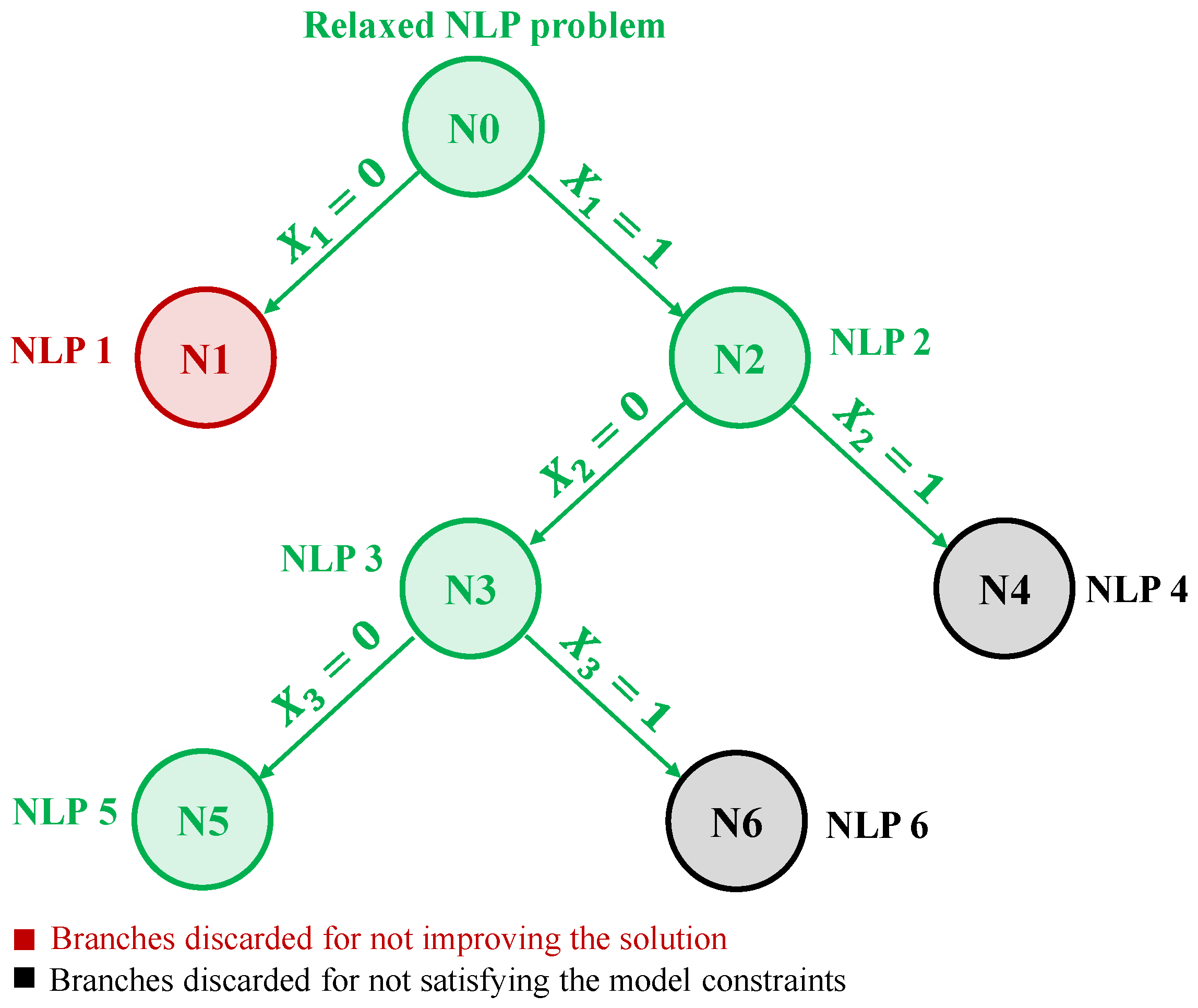
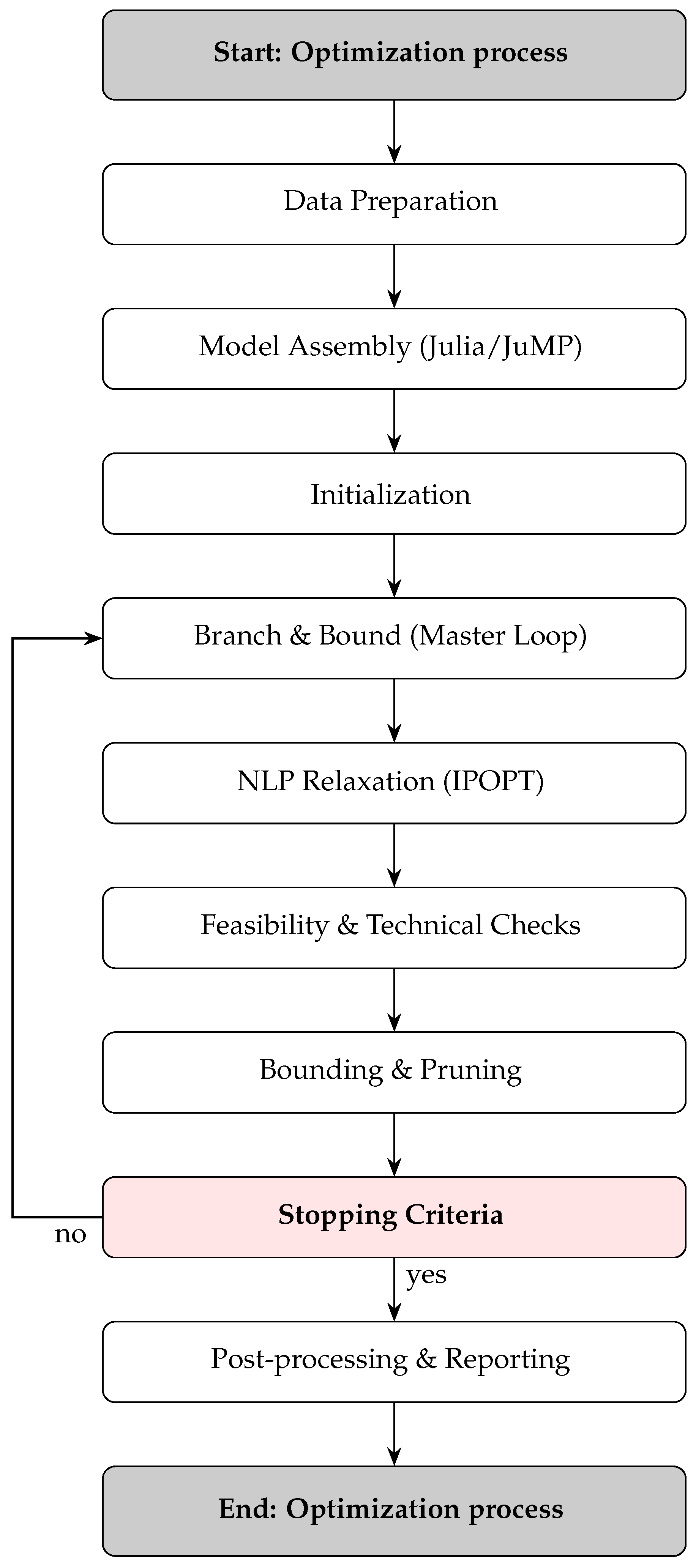
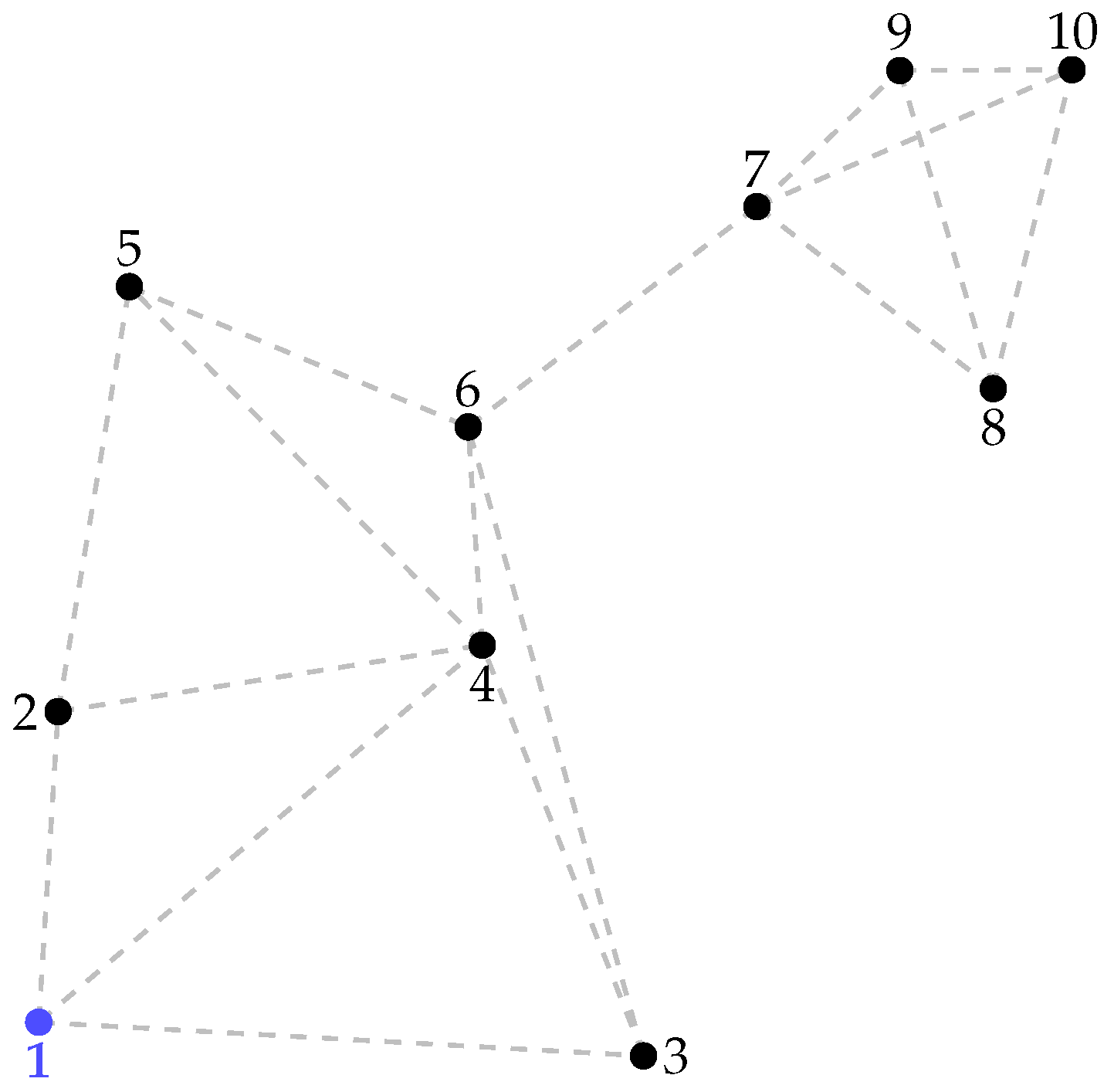
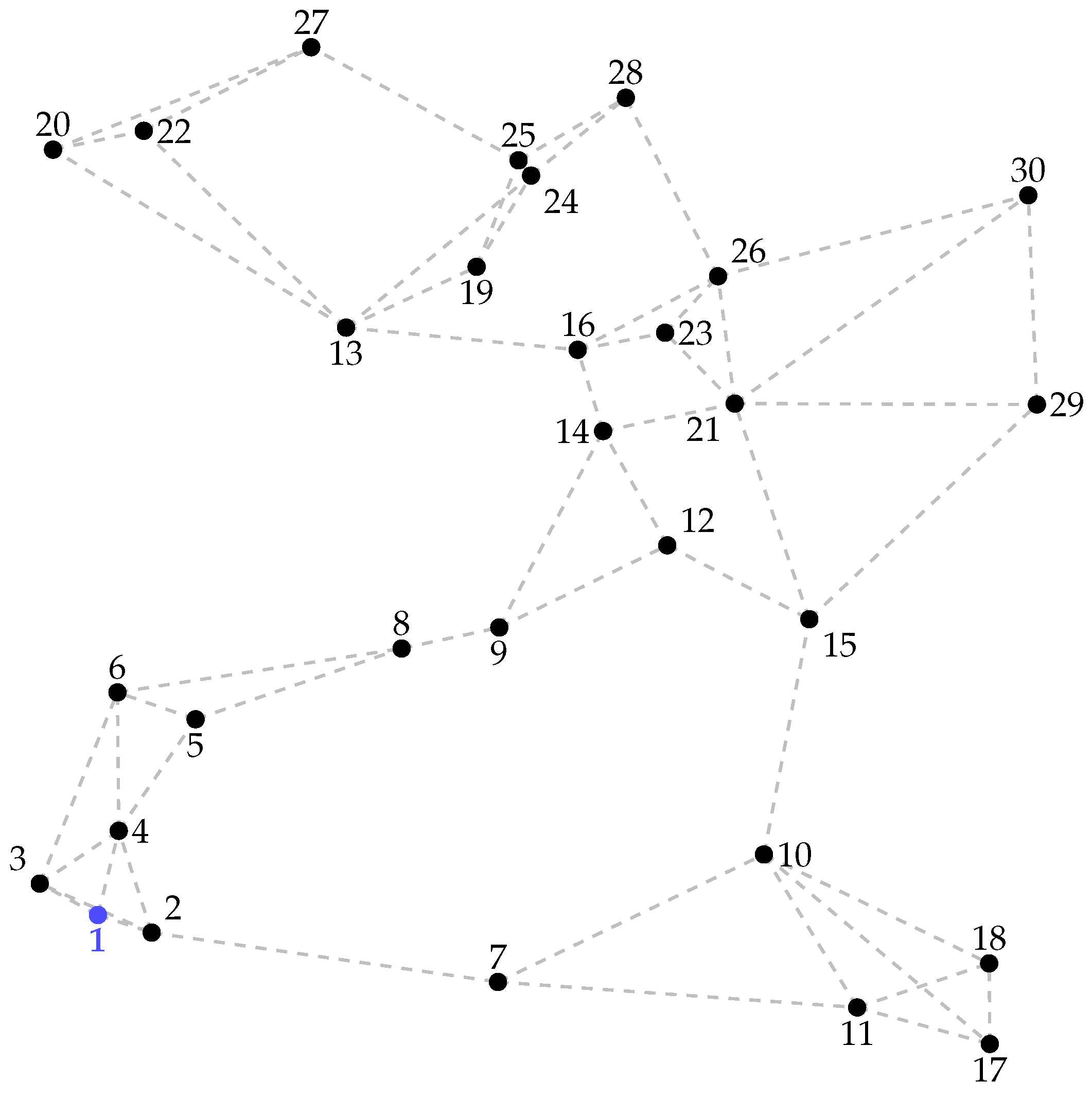
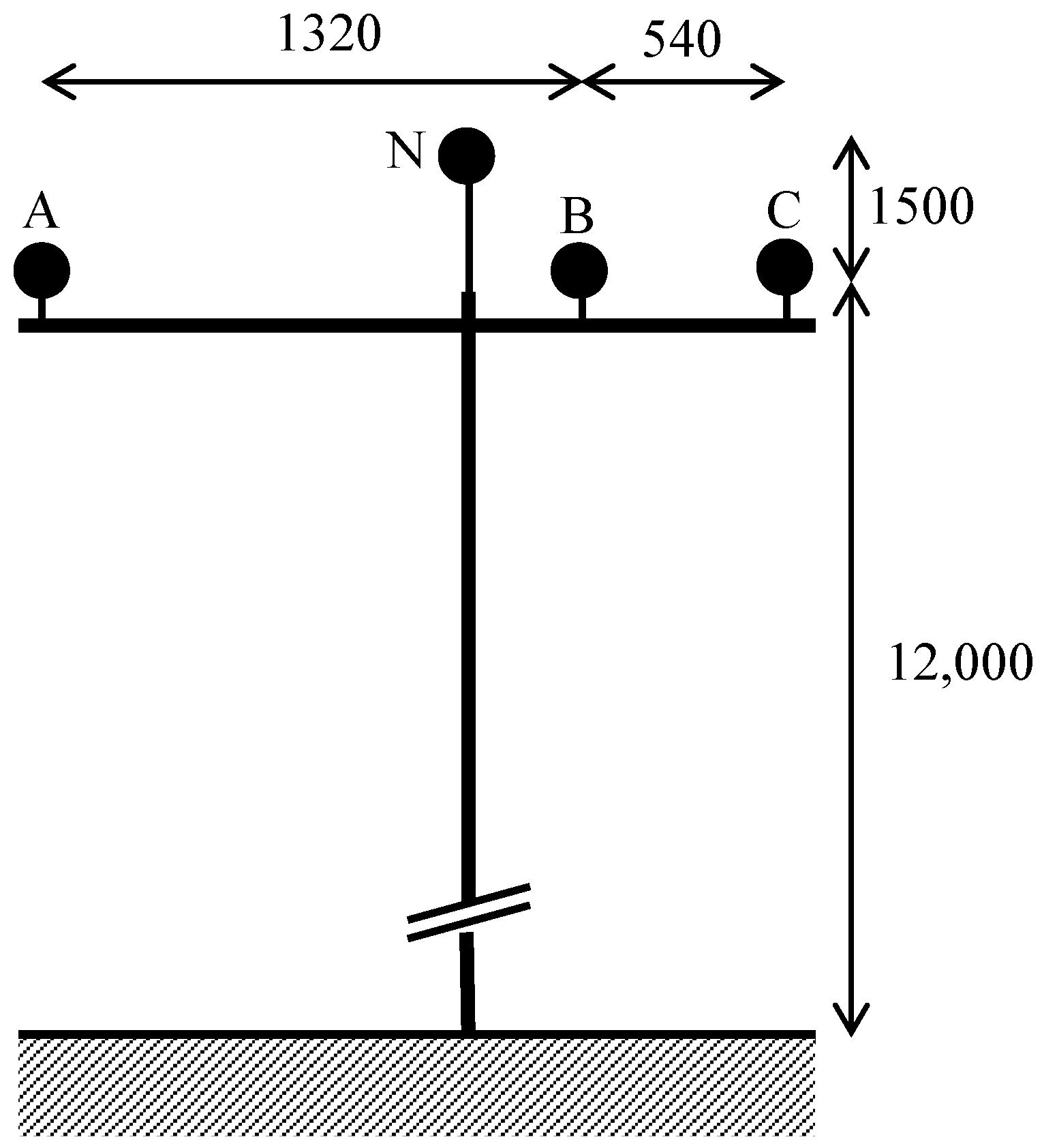
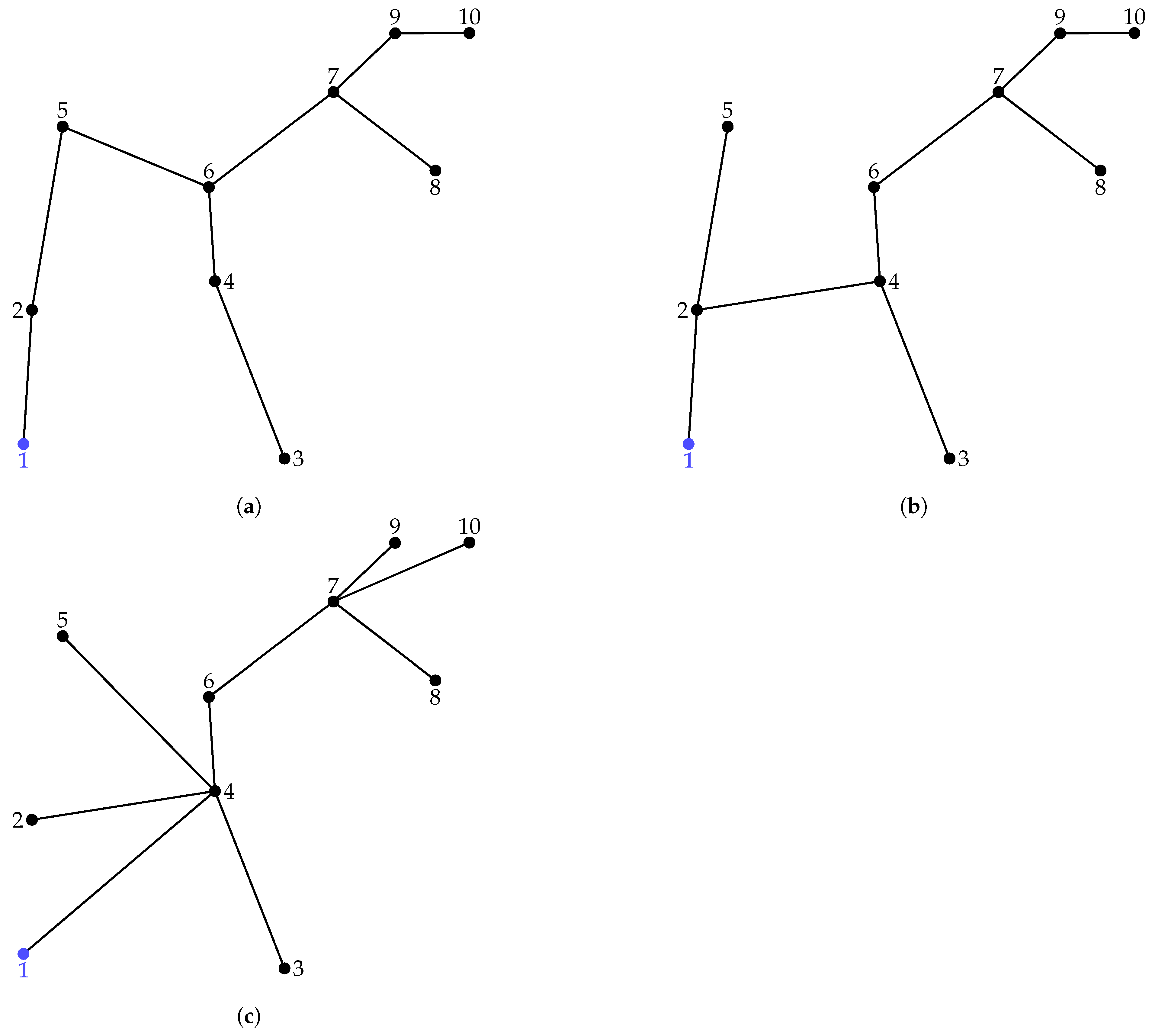

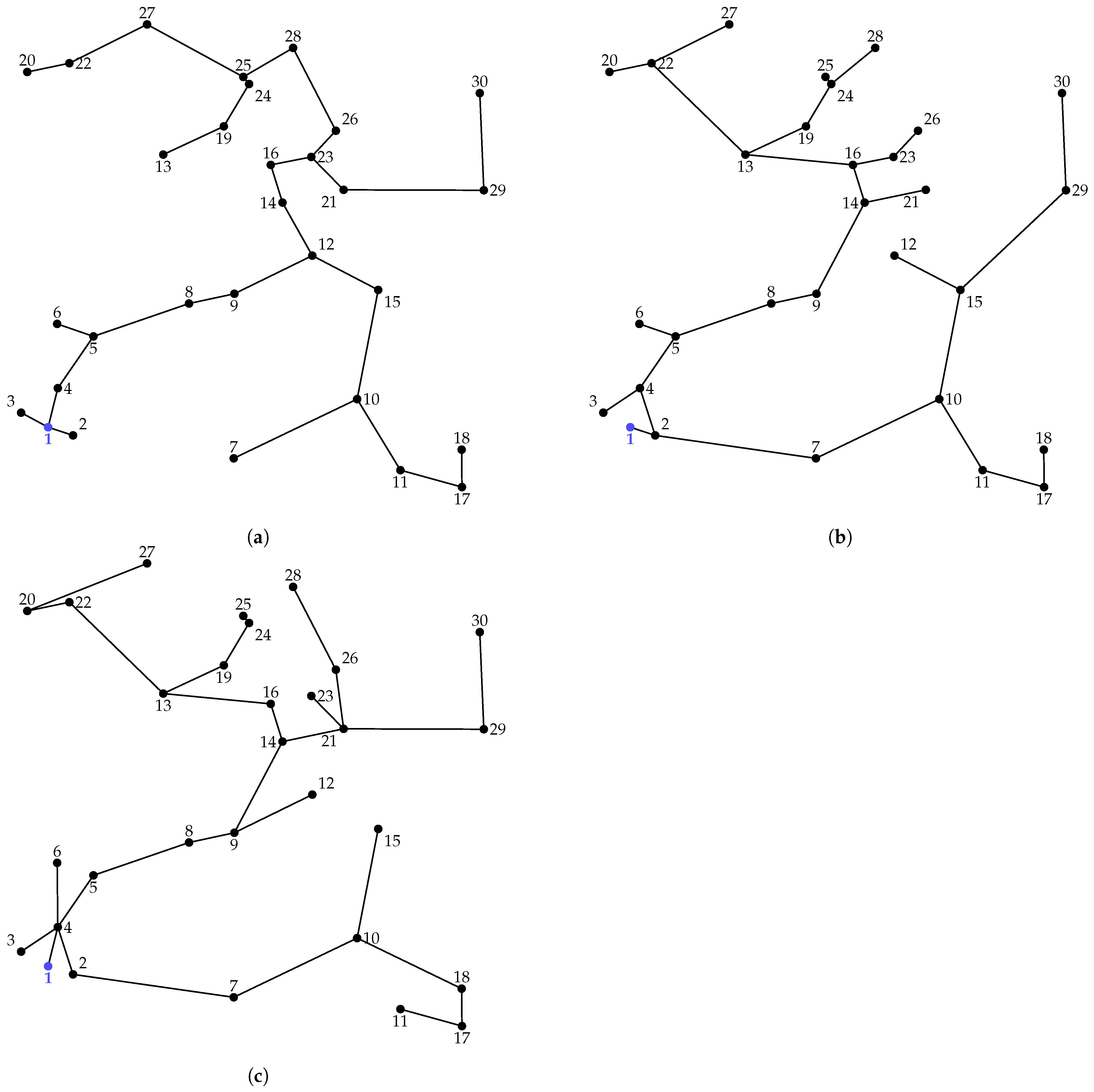
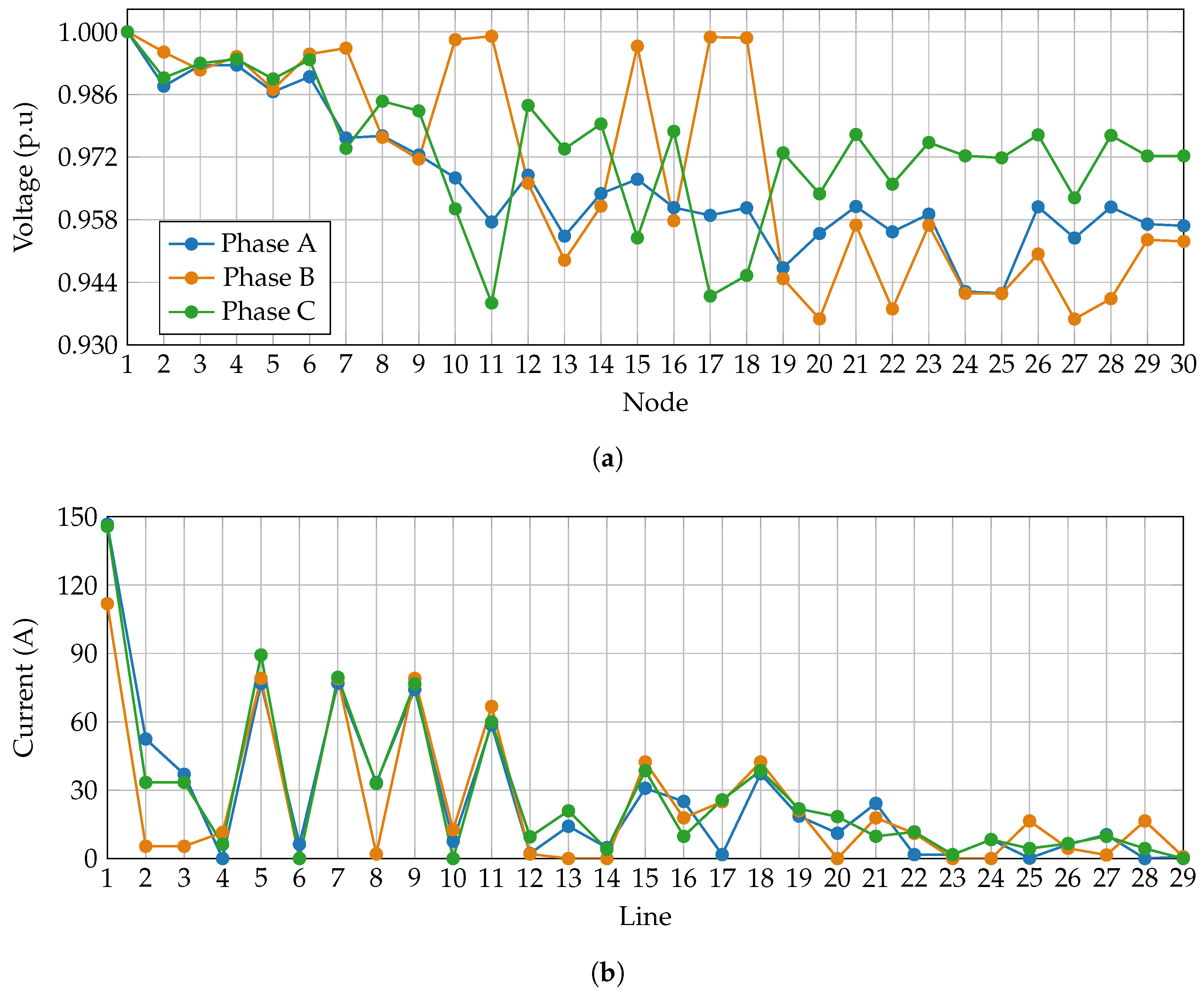
| Line of Work | Typical Approach | Strengths | Limitations | Identified Gap | This Work Advances |
|---|---|---|---|---|---|
| (A) Cascaded heuristics/metaheuristics | Fix the topology with MST or a similar rule and then optimize conductor sizes with a metaheuristic. | High speed; simple implementations; frequently feasible solutions. | Decoupling of routing–sizing; inherits suboptimality of the initial topology; no guarantees of global optimality. | Lack of joint co-optimization of topology and sizing and absence of certifiable globality. | Exact joint optimization of routing and conductor sizing in a single MINLP; solved with BONMIN, yielding verifiable global optima in the analyzed cases. |
| (B) Reconfiguration/operation | Improve losses/voltages given a fixed asset inventory | Operational improvement; explicit treatment of uncertainty; practical scalability. | Does not decide topological or conductor-investment choices; simplifications (single-phase equivalents/linearizations) that dilute couplings. | Absence of integrated planning in three-phase unbalanced settings with physical fidelity. | Complex-domain formulation with current-injection power flow, radiality, and electrical limits; investment decisions (routes and conductors) integrated with technical feasibility. |
| (C) MINLP planning formulations | Integrated models with integer and continuous variables; some linearizations or single-phase equivalents; sometimes only a subproblem. | Unified formal framework; traceable decisions; potential to integrate investment and operation. | Power-flow simplifications; partial coverage of the decision space; limited evidence on unbalanced rural feeders. | Incomplete physical fidelity and lack of a joint treatment of routing + sizing under unbalance. | Exact MINLP in complex variables preserving three-phase couplings and co-optimizing routing + sizing; validation on rural feeders with comparisons against MST and metaheuristics. |
| Variable Name | Variable | MINLP Model | Type |
|---|---|---|---|
| Voltage drop | Complex | ||
| Current flow | Complex | ||
| Current injection | Complex | ||
| Wye current consumption | Complex | ||
| Delta current consumption | Complex | ||
| Nodal voltage | Complex | ||
| Route selection | m | Binary | |
| Conductor selection | Binary | ||
| Total variables | |||
| Equation Name | Equation | V-MINLP Constraints | Type |
|---|---|---|---|
| Objective function | (1) | 1 | Real |
| Current flow | (4) | n | Complex |
| Source current | (5) | n | Complex |
| Load current | (6) | n | Complex |
| Line voltage drop | (7) | Complex | |
| Voltage regulation | (8) | n | Real |
| Thermal limit | (9) | m | Real |
| Minimum connectivity | (10) | n | Real |
| Radial topology | (11) | 1 | Real |
| Conductor assignment | (12) | m | Binary |
| Demand current injection | (13) | Complex | |
| Reference voltage | (14) | 1 | Complex |
| Total equations and inequalities | |||
| Node i | Type | ||||||
|---|---|---|---|---|---|---|---|
| 1 | 0 | 0 | 0 | 0 | 0 | 0 | – |
| 2 | 111 | 62 | 0 | 0 | 0 | 0 | |
| 3 | 0 | 0 | 88 | 41 | 0 | 0 | Y |
| 4 | 0 | 0 | 116 | 6 | 28 | 8 | |
| 5 | 0 | 0 | 78 | 4 | 0 | 0 | |
| 6 | 1 | 0 | 0 | 0 | 95 | 57 | Y |
| 7 | 154 | 37 | 70 | 37 | 0 | 0 | Y |
| 8 | 22 | 9 | 0 | 0 | 0 | 0 | Y |
| 9 | 0 | 0 | 79 | 42 | 0 | 0 | |
| 10 | 62 | 31 | 52 | 18 | 155 | 92 | Y |
| Line (Connection) | Length (m) | Line (Connection) | Length (m) |
|---|---|---|---|
| 1 (1-2) | 1844.3777 | 10 (5-6) | 2369.4983 |
| 2 (1-3) | 3965.9957 | 11 (6-7) | 2297.5870 |
| 3 (1-4) | 3664.6666 | 12 (7-8) | 1886.3690 |
| 4 (2-4) | 2805.8011 | 13 (7-9) | 1235.2052 |
| 5 (2-5) | 2559.9566 | 14 (7-10) | 2217.6152 |
| 6 (3-4) | 2652.2867 | 15 (8-9) | 1980.9089 |
| 7 (3-6) | 3897.8878 | 16 (8-10) | 1958.2076 |
| 8 (4-5) | 3138.1284 | 17 (9-10) | 1128.0111 |
| 9 (4-6) | 1295.2714 |
| Node i | Type | ||||||
|---|---|---|---|---|---|---|---|
| 1 | 0 | 0 | 0 | 0 | 0 | 0 | – |
| 2 | 89 | 48 | 0 | 0 | 0 | 0 | Y |
| 3 | 0 | 0 | 74 | 11 | 36 | 19 | Y |
| 4 | 71 | 23 | 98 | 47 | 102 | 43 | Y |
| 5 | 0 | 0 | 0 | 0 | 59 | 25 | Y |
| 6 | 35 | 21 | 0 | 0 | 0 | 0 | Y |
| 7 | 37 | 15 | 0 | 0 | 7 | 1 | |
| 8 | 0 | 0 | 0 | 0 | 30 | 16 | |
| 9 | 54 | 15 | 0 | 0 | 101 | 39 | Y |
| 10 | 100 | 41 | 0 | 0 | 16 | 7 | Y |
| 11 | 26 | 15 | 0 | 0 | 24 | 7 | Y |
| 12 | 48 | 7 | 79 | 15 | 0 | 0 | Y |
| 13 | 0 | 0 | 0 | 0 | 42 | 25 | |
| 14 | 40 | 16 | 0 | 0 | 0 | 0 | |
| 15 | 12 | 7 | 12 | 5 | 51 | 31 | Y |
| 16 | 40 | 14 | 0 | 0 | 0 | 0 | Y |
| 17 | 41 | 5 | 0 | 0 | 82 | 34 | Y |
| 18 | 0 | 0 | 0 | 0 | 35 | 6 | |
| 19 | 6 | 1 | 0 | 0 | 0 | 0 | Y |
| 20 | 0 | 0 | 109 | 50 | 0 | 0 | |
| 21 | 30 | 10 | 0 | 0 | 19 | 7 | Y |
| 22 | 0 | 0 | 81 | 45 | 86 | 35 | Y |
| 23 | 0 | 0 | 0 | 0 | 85 | 33 | |
| 24 | 82 | 38 | 90 | 48 | 0 | 0 | Y |
| 25 | 15 | 7 | 0 | 0 | 90 | 55 | |
| 26 | 1 | 0 | 0 | 0 | 0 | 0 | Y |
| 27 | 0 | 0 | 0 | 0 | 18 | 4 | |
| 28 | 0 | 0 | 91 | 46 | 26 | 11 | Y |
| 29 | 33 | 9 | 22 | 9 | 41 | 9 | Y |
| 30 | 8 | 3 | 0 | 0 | 0 | 0 |
| Line (Connection) | Length (m) | Line (Connection) | Length (m) |
|---|---|---|---|
| 1 (1-2) | 520.6496 | 29 (13-20) | 3212.2696 |
| 2 (1-3) | 616.8930 | 30 (13-22) | 2699.0141 |
| 3 (1-4) | 863.1709 | 31 (13-24) | 2272.1763 |
| 4 (2-3) | 1132.4933 | 32 (14-16) | 845.1805 |
| 5 (2-4) | 1061.2841 | 33 (14-21) | 1233.0568 |
| 6 (2-7) | 3198.3802 | 34 (15-21) | 2261.6474 |
| 7 (3-4) | 893.6582 | 35 (15-29) | 2987.9480 |
| 8 (3-6) | 2040.1593 | 36 (16-23) | 815.1380 |
| 9 (4-5) | 1317.8987 | 37 (16-26) | 1476.5148 |
| 10 (4-6) | 1385.0520 | 38 (17-18) | 806.0223 |
| 11 (5-6) | 762.0564 | 39 (19-24) | 1039.5085 |
| 12 (5-8) | 2008.8962 | 40 (19-25) | 1132.7158 |
| 13 (6-8) | 2629.8992 | 41 (20-22) | 849.2968 |
| 14 (7-10) | 2741.9892 | 42 (20-27) | 2569.3114 |
| 15 (7-11) | 3287.9034 | 43 (21-23) | 952.4584 |
| 16 (8-9) | 915.4130 | 44 (21-26) | 1283.1543 |
| 17 (9-12) | 1739.4749 | 45 (21-29) | 2757.0147 |
| 18 (9-14) | 2181.2918 | 46 (21-30) | 3393.3376 |
| 19 (10-11) | 1751.6170 | 47 (22-27) | 1741.7463 |
| 20 (10-15) | 2389.1432 | 48 (23-26) | 743.3129 |
| 21 (10-17) | 2800.4530 | 49 (24-25) | 190.8009 |
| 22 (10-18) | 2326.1825 | 50 (24-28) | 1163.4041 |
| 23 (11-17) | 1263.8532 | 51 (25-27) | 2204.2743 |
| 24 (11-18) | 1282.2235 | 52 (25-28) | 1161.4930 |
| 25 (12-14) | 1284.4629 | 53 (26-28) | 1973.1969 |
| 26 (12-15) | 1491.8904 | 54 (26-30) | 2944.5986 |
| 27 (13-16) | 2125.6246 | 55 (29-30) | 2094.4904 |
| 28 (13-19) | 1337.2154 |
| Size (c) | Caliber | (ft) | (Ω/mi) | (A) | (USD/km) |
|---|---|---|---|---|---|
| 1 | P: Swan | 0.00437 | 2.57 | 140 | 2100 |
| N: Thrush | 0.00416 | 3.18 | |||
| 2 | P: Sparrow | 0.00418 | 1.69 | 183 | 4035 |
| N: Swallow | 0.00430 | 2.07 | |||
| 3 | P: Raven | 0.00446 | 1.12 | 240 | 5889 |
| N: Robin | 0.00418 | 1.38 | |||
| 4 | P: Quail | 0.00510 | 0.895 | 275 | 6677 |
| N: Raven | 0.00446 | 1.12 | |||
| 5 | P: Penguin | 0.00814 | 0.592 | 360 | 9350 |
| N: Pigeon | 0.00600 | 0.723 | |||
| 6 | P: Waxwing | 0.01980 | 0.3488 | 480 | 14,403 |
| N: Penguin | 0.00814 | 0.592 |
| Size (c) | Impedance Matrix (Ω/km) | ||
|---|---|---|---|
| 1 | |||
| 2 | |||
| 3 | |||
| 4 | |||
| 5 | |||
| 6 | |||
| Method | Caliber | (USD) | (USD) | (USD) | SD (%) | Mean Time (s) |
|---|---|---|---|---|---|---|
| MST-SSA | 84,010.5276 | 28,482.5305 | 432,288.5583 | 0.1016 | 11.9777 | |
| MST-GWO | 84,010.5276 | 28,482.5305 | 432,288.5583 | 1.7618 | 10.3431 | |
| MST-VSA | 84,010.5276 | 28,482.5305 | 432,288.5583 | 1.7618 | 9.8494 | |
| MST-EO | 84,010.5276 | 28,482.5305 | 432,288.5583 | 1.7618 | 11.7095 | |
| SSA | 73,338.8981 | 24,114.3711 | 384,827.4825 | 0.2519 | 11.6879 | |
| GWO | 73,338.8981 | 24,114.3711 | 384,827.4825 | 4.0362 | 12.0866 | |
| VSA | 73,338.8981 | 24,114.3711 | 384,827.4825 | 4.0362 | 10.5378 | |
| EO | 73,338.8981 | 24,114.3711 | 384,827.4825 | 4.0362 | 12.9896 | |
| MINLP | 71,796.4865 | 25,312.6505 | 359,792.5674 | 0.0000 | 111.2700 |
| Method | Caliber | (USD) | (USD) | (USD) | SD (%) | Mean Time (s) |
|---|---|---|---|---|---|---|
| MST-SSA | 210,964.5728 | 99,214.5797 | 810,480.2394 | 1.0605 | 316.0282 | |
| MST-GWO | 208,796.0176 | 98,218.8121 | 801,909.8857 | 0.4268 | 122.7503 | |
| MST-VSA | 209,131.4136 | 97,983.6771 | 807,101.0909 | 0.5330 | 123.4554 | |
| MST-EO | 208,560.8435 | 98,212.5021 | 799,970.3986 | 0.0404 | 117.9394 | |
| GWO | 193,927.1327 | 75,814.5040 | 897,883.1227 | 0.5423 | 128.5498 | |
| SSA | 188,607.2860 | 73,518.8492 | 875,396.8977 | 1.6020 | 203.3250 | |
| VSA | 184,124.2744 | 71,531.1380 | 856,976.0640 | 0.9265 | 135.7803 | |
| EO | 183,771.6136 | 71,162.4411 | 857,636.2343 | 0.1426 | 121.2455 | |
| MINLP | 180,902.7997 | 75,204.4172 | 793,060.1277 | 0.0000 | 39,562.0100 |
Disclaimer/Publisher’s Note: The statements, opinions and data contained in all publications are solely those of the individual author(s) and contributor(s) and not of MDPI and/or the editor(s). MDPI and/or the editor(s) disclaim responsibility for any injury to people or property resulting from any ideas, methods, instructions or products referred to in the content. |
© 2025 by the authors. Licensee MDPI, Basel, Switzerland. This article is an open access article distributed under the terms and conditions of the Creative Commons Attribution (CC BY) license (https://creativecommons.org/licenses/by/4.0/).
Share and Cite
Cortés-Caicedo, B.; Montoya, O.D.; Grisales-Noreña, L.F.; Bustamante-Mesa, S.; Torres-Pinzón, C.A. Joint Feeder Routing and Conductor Sizing in Rural Unbalanced Three-Phase Distribution Networks: An Exact Optimization Approach. Sci 2025, 7, 165. https://doi.org/10.3390/sci7040165
Cortés-Caicedo B, Montoya OD, Grisales-Noreña LF, Bustamante-Mesa S, Torres-Pinzón CA. Joint Feeder Routing and Conductor Sizing in Rural Unbalanced Three-Phase Distribution Networks: An Exact Optimization Approach. Sci. 2025; 7(4):165. https://doi.org/10.3390/sci7040165
Chicago/Turabian StyleCortés-Caicedo, Brandon, Oscar Danilo Montoya, Luis Fernando Grisales-Noreña, Santiago Bustamante-Mesa, and Carlos Andrés Torres-Pinzón. 2025. "Joint Feeder Routing and Conductor Sizing in Rural Unbalanced Three-Phase Distribution Networks: An Exact Optimization Approach" Sci 7, no. 4: 165. https://doi.org/10.3390/sci7040165
APA StyleCortés-Caicedo, B., Montoya, O. D., Grisales-Noreña, L. F., Bustamante-Mesa, S., & Torres-Pinzón, C. A. (2025). Joint Feeder Routing and Conductor Sizing in Rural Unbalanced Three-Phase Distribution Networks: An Exact Optimization Approach. Sci, 7(4), 165. https://doi.org/10.3390/sci7040165









